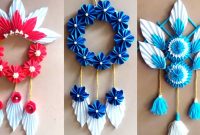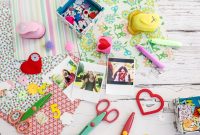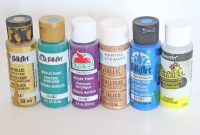Papercut art, which is both classic and difficult to make, has become popular again in recent years. This piece looks at a wide range of papercut art styles, from the classic outline cut to cutting edge 3D patterns. Discover the beauty of this one-of-a-kind art form as we delve into the world of accuracy, creativity, and healthy benefits.
The Beginning
What Does Papercut Art Mean?
Papercut art is made by carefully cutting paper into patterns that are very complicated. It’s a delicate skill that needs careful attention and time.
Significance in History
Learn about the history of papercut art by looking at how it started in different countries and how it has changed over time.
Getting more popular
Learn why there is a huge interest in papercut art right now, which makes it a popular choice among artists and art lovers alike.
Things you need and tools
Important Tools
Learn about the basic tools you’ll need for papercut art, such as cutting mats and sharp knives.
Different kinds of paper
Learn about the different kinds of paper used in papercut art. Think about the colour, texture, and thickness of the paper.
Tools for cutting
Find out about the different cutting tools that are out there and how to use them to make different papercut shapes.
How to Make Simple Papercuts
Cutting silhouettes the old way
Learn about the traditional art of making shadows by cutting paper and look at where it came from and how it is used today.
Spaces for Good and Bad
Learn how to use positive and negative space in papercut art to make shapes that are both complex and appealing to the eye.
How to Use Layers
Find out how to stack paper to give your papercuts more depth and dimension.
More advanced methods
Lots of complicated patterns and designs
Mastering complicated designs and patterns will help you take your papercut art to the next level and show off your artistic skills.
Colours Being Used
Find out how to add colours to your papercut art so that your designs are more interesting than the usual black and white ones.
3D Cut Out Art
Explore the interesting world of 3D papercut art, where layers come to life and make stunning effects.
Well-known papercut artists
A Look at Well-Known Artists
Discover the unique styles and contributions to the art of papercutting made by some of the most important artists of all time.
What They Did to Help the Craft
Discover how these artists have changed the world of papercut art and how they continue to do so today.
Showing Off Your Papercut Art
Putting up and framing
Find out how to frame and show off your papercut art in a way that makes it look better.
Digital platforms for showing off
Look into online venues where you can show off your papercut work, meet with other fans, and reach people all over the world.
Using papercut art as a form of therapy
Benefits for Relieving Stress
Find out how papercut art can help you relax and deal with stress by giving you a creative outlet.
Being more mindful and focusing better
Find out how doing papercut art can help your general health by making you more aware and sharpening your focus.
Problems with making papercut art
A lot of care and precision
Recognise how hard it is to be precise and patient when you’re making papercut art and come up with ways to get around those problems.
How to Avoid Making Common Mistakes
Papercut artists often make the same mistakes, so learn from them and find ways to avoid or fix them.
The Learning Curve
Learn about how long it takes to get good at papercut art and how persistence pays off.
Papercut Art from Around the World
Meaning in Culture
Learn about the societal importance of papercut art in different parts of the world and how it is used in different cultures.
Different methods in different areas
You can learn more by comparing and contrasting the different papercut styles used in different countries.
What’s Next for Papercut Art
Modern Fashion Trends
Keep up with the newest trends in papercut art and see how tradition and technology come together.
New ideas and combining technologies
Find out how technology is changing papercut art and giving artists new ways to try new things and make art.





